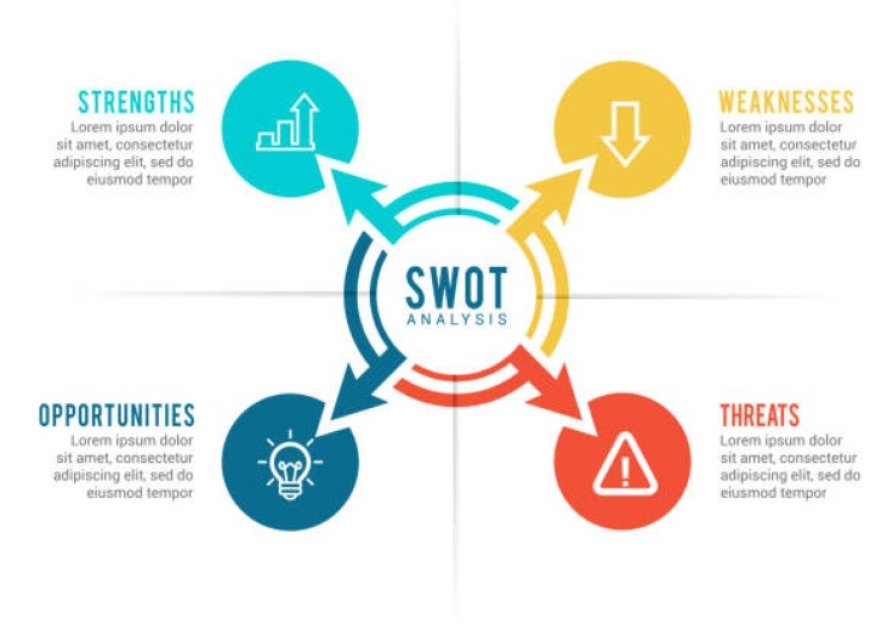SWOT Analysis: A Powerful Tool for Strategic Success
Learn how to conduct a SWOT analysis to identify your organization's strengths, weaknesses, opportunities, and threats, and develop strategies to leverage your strengths, overcome your weaknesses, seize opportunities, and mitigate threats.
SWOT Analysis Benefits
Organizations can use the SWOT analysis technique, which is a strategic planning tool, to determine their opportunities, threats, weaknesses, and strengths. It is an easy-to-use yet effective solution that works for businesses of all kinds and sectors.
The following are a few advantages of SWOT analysis:
It assists businesses in developing a deeper understanding of their internal and external environments. This can result in improved strategic planning and more informed decision-making.
It can assist businesses in determining their advantages and drawbacks in the marketplace. Using this data, plans to capitalize on the organization's advantages and mitigate its disadvantages can be developed.
It can assist firms in locating growth and expansion opportunities.This can result in new product and service offerings, collaborations, and markets.
It can assist organizations in recognizing possible risks and creating countermeasures. By doing this, the company may be better protected against unforeseen circumstances and setbacks.
The following are particular instances of the application of SWOT analysis:
* A small business could find expansion prospects, like entering a new market or introducing a new product, by using SWOT analysis.
* A large company could find methods to cut expenses or increase efficiency by using SWOT analysis.
* A non-profit could utilize SWOT analysis to find strategies for raising more money or reaching new audiences.
Steps for performing a SWOT analysis
The following steps can be used to perform a SWOT analysis:
1. List all of your stakeholders. These are the individuals or organizations that are interested in your business, including clients, staff members, investors, and the local community.
2. Acquire details. Data from surveys, interviews, market research, and financial reports may be included in this.
3. List your advantages, disadvantages, opportunities, and dangers. Strengths are internal elements, such a distinctive product or service or a strong brand reputation, that provide your company with an advantage. Weaknesses are internal elements, such excessive expenses or a shortage of qualified staff, that impair the functioning of your company. Opportunities are outside forces, like expanding markets or new laws, that may be advantageous to your company. Threats are outside elements that have the potential to hurt your business, like a rival joining the market or a shift in customer preferences.
4. Examine your SWOT analysis. Examine your strengths, weaknesses, opportunities, and dangers for patterns and linkages. This will assist you in determining tactics to make the most of your advantages, overcome your disadvantages, grab chances, and lessen hazards.
5. Create a SWOT analysis. Your SWOT analysis is broken down into four quadrants in this straightforward table: strengths, weaknesses, opportunities, and threats.
6. Convey your SWOT analysis to relevant parties. This will assist you in gathering input and guaranteeing that your plans meet the requirements and expectations of your stakeholders.
To sum up
A useful tool that can assist businesses of all sizes and in all sectors in making better decisions and achieving their strategic objectives is the SWOT analysis. I strongly advise you to try SWOT analysis if you haven't already. It could surprise you how beneficial it can be.












































































































































































































